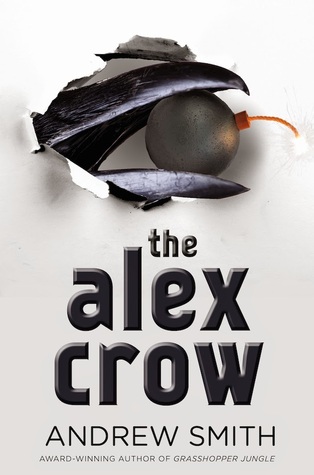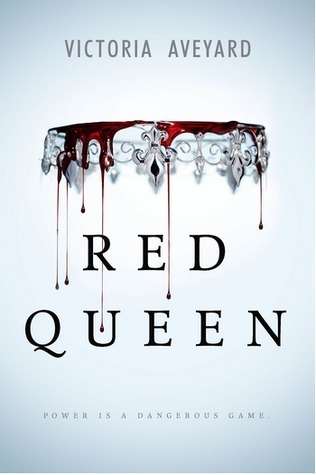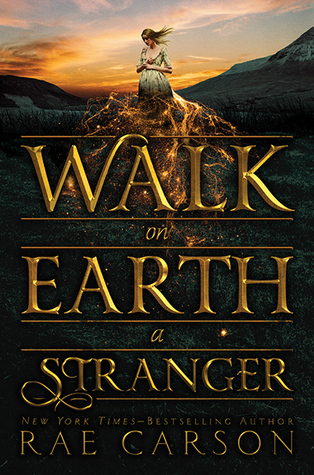I Will Survive: The Alex Crow by Andrew Smith vs An Ember in the Ashes by Sabaa Tahir
At this point in the Battle, these two titles have been reviewed multiple times, so please bear with me if I repeat anything others said before me; I tried to avoid reading the reviews to avoid spoiling or biasing myself.
At first glance, these two titles don’t have much in common. On the one hand, with The Alex Crow you have a story that takes place in a mostly contemporary setting with no magic but plenty of science to back up claims of the supernatural and on the other, you have a magical, ancient Roman-esque setting in An Ember in the Ashes. A mostly male lineup of characters in the former versus a relatively balanced lineup in the latter. The completely unexpected versus the more formulaic. No romance versus a double love triangle. Etcetera, etcetera, these two titles seem to be about as different from each other as it is possible for two books to be. But what these two titles do have in common are the underlying themes of fear, survival, uncertainty, and a loss of family that the main characters have to experience and endure. In those ways, th ese books aren’t so different after all.
ese books aren’t so different after all.
The Alex Crow
Finding himself the lone survivor of a terrorist attack on his small Middle Eastern village, 15-year-old Ariel is swept away by the U.S. military to join a new family and lead a new life in the United States. By all accounts, he should be grateful that he’s escaping a brutal, lonely, war-torn existence in favor of a comparatively quieter life with a wholesome West Virginian family. But when Ariel is sent off to the Merrie-Seymour Camp with his adoptive brother for the summer, multiple events occur which allow Ariel to see his adoptive family and his new life are anything but wholesome.
The Alex Crow is a highly clever, creative, and wholly unique book – something that I’ve heard is the case for Andrew Smith books in general (though I don’t have firsthand knowledge of this given it is my first time partaking in his writing). It blends contemporary with a touch of humor, sci-fi, and faux historical fiction, and Smith masterfully works multiple subplots into one larger, seamless yet surprising and compelling story. Besides the nonlinear storyline depicting Ariel’s time both in the Middle East and in the U.S., Smith also adroitly weaves together threads that tell the stories of animals long extinct and the mostly-failed boat expeditions of a time before the world was largely conquered by man.
In his portrayal of modern warfare and the collateral damages and spoils thereof, Smith doesn’t shy away from depicting horrifying acts, which are more than hinted at but that somehow manage to avoid crossing into the obscene or gratuitous. They are scenes chockful of discomfort but they feel unrelenting in their realness.
To that point, Ariel is not a character with whom many people can sympathize but he is a character who is becoming more and more conceptually familiar in our society due to current international events. Throughout the story, Smith manages to believably convey Ariel as haunted by his past and unsure of his future. His companions throughout the story help to provide comic relief and assist in pushing the plot along but in doing so, they never quite manage to gain any depth.
An Ember in the Ashes
500 years of Martial rule have wrought oppression and persecution for the Scholars of the Empire but in all that time, it hasn’t managed to dampen their passion for learning or their desire for freedom. Laia, a member of a prominent Scholar family, helps her grandparents to earn a meager living until her brother Darin is caught and arrested as a traitor of the Empire. Not content to let Darin meet his fate in the Empire’s hands, Laia goes undercover as a spy for the Resistance and in the process, many of her preconceived notions about who she is and what she is capable of are challenged.
Although this fantasy book is riddled with familiar tropes that almost make it sound like a dystopian novel – quashed intellect, a great foretelling, fights to the death, a despotic regime – they are presented in ways that make them feel new and exciting. It helps quite a bit that Tahir presents a world in which many of the characters are not strictly good or evil, but realistically complex beings who make both good and bad choices.
Although the Commandant, the rather frightening face of the  Empire, is decidedly less nuanced than that, Laia, Elias, Cook, and Helene are all great counter-examples to the Commandant and brilliant examples of the complexity Tahir was able to inject into the story. Laia and Elias, especially, are equally deep characters who have faced great losses in their lives and must overcome their fears and weaknesses to prevail against the Empire.
Empire, is decidedly less nuanced than that, Laia, Elias, Cook, and Helene are all great counter-examples to the Commandant and brilliant examples of the complexity Tahir was able to inject into the story. Laia and Elias, especially, are equally deep characters who have faced great losses in their lives and must overcome their fears and weaknesses to prevail against the Empire.
Tahir also excelled in her ability to flawlessly provide a great deal of backstory – via flashbacks, dreams, and dialogue – for the characters, the magic, and for what led up to the events that take place in the story, all without slowing down the story’s quick-paced tempo. More than Alex, the pages of this book kept themselves turning without cause for much hesitation or fear of the kind of discomfort that might be found in the upcoming pages. Unpleasant things may be (and certainly were) headed the reader’s way in Ember but they surely couldn’t be (and weren’t) as strange and unexpected as something Smith would write.
The most disappointing aspect of Ember is the fact that it contains a double love triangle: Laia-Elias-Keenan and Elias-Laia-Helene. In both cases, there is at least one instance of characters being pulled towards another simply due to the way they look. In particular, Tahir did a less than stellar job fleshing out the Keenan character and making him believably compelling as a romantic interest for anyone other than those who like the silent, emotionally detached yet moody types. I know there is an appeal for some in those types of romantic partners but encouraging it in a novel meant for teens is a pet peeve of mine.
What It All Comes Down To
The Alex Crow has so many things working in its favor but this title is not for everyone. Besides its well-crafted absurdity, The Alex Crow falls very short in how it treats females. It’s not that female characters are simply underdeveloped (though they are) or even lacking in greater representation (while it would have been nice to see more females in the story, the minimal inclusion makes sense due to the setting), it’s that those who do exist in the story are insulting and disagreeable depictions of what a girl or woman can be.
Female readers deserve a clever, creative, wholly unique book that does not paint the only representatives of their sex as overly and dangerously accommodating (Natalie Burgess), too good and sexually available to be true (Crystal Lutz), or radically calling for the end of men, only to disappear themselves (Mrs. Nussbaum). Perhaps there is a deeper meaning or a social criticism from Smith that I am missing but if there isn’t, it’s unfortunate that this is the case because Smith hit every other note exactly right, slowly pulling the reader into a reality that no one would want to claim as their own but would delight in reading about.
Where The Alex Crow fails spectacularly, An Ember in the Ashes shines. Although Ember similarly suffers from a surprising lack of female characters (again, the setting provides some annoying but believable limitations), it does have more than Alex and the way Tahir handles the few who are present is a breath of fresh air after Smith’s male-centric storytelling. Tahir herself pays the characters more respect, making them capable and giving them ambition, intelligence, and a full array of emotions. Tahir also acknowledges that in the society in which these female characters exist, things are stacked against them. Fewer are accepted into prestigious positions than men and those who are have to continually prove themselves to the men around them. However, the fact that the females make an effort to fight against those injustices makes all the difference in the world.
In the end, it was Tahir who wrote a book that is accessible and non-polarizing, not to mention completely captivating.
WINNER: AN EMBER IN THE ASHES BY SABAA TAHIR
Reviewed by Alea Perez, Westmont Public Library
 I began reading Red Queen a few days ago with high hopes. I generally enjoy fantasy, scifi, superhero, and dystopia stories – all elements contained within this attractively-bound book. In a nutshell, Mare Barrow is a member of the oppressed Reds who discovers that she has a special power that simultaneously makes her useful to and a threat to the wealthy, powerful Silvers. Complicating matters are three guys with three different agendas, all pulling her head and heart in three different directions. Can she use her newfound ability and position to help her people? And which guy will she choose? It had me at hello.
I began reading Red Queen a few days ago with high hopes. I generally enjoy fantasy, scifi, superhero, and dystopia stories – all elements contained within this attractively-bound book. In a nutshell, Mare Barrow is a member of the oppressed Reds who discovers that she has a special power that simultaneously makes her useful to and a threat to the wealthy, powerful Silvers. Complicating matters are three guys with three different agendas, all pulling her head and heart in three different directions. Can she use her newfound ability and position to help her people? And which guy will she choose? It had me at hello. Earth a Stranger is tricky. One might think comparing two books is like deciding between Red Delicious and Granny Smith apples. In this case, it’s more like comparing apples to celery. Or comparing a goldfish to a shoe. These books are so completely different, a comparison is very, very tricky.
Earth a Stranger is tricky. One might think comparing two books is like deciding between Red Delicious and Granny Smith apples. In this case, it’s more like comparing apples to celery. Or comparing a goldfish to a shoe. These books are so completely different, a comparison is very, very tricky.
 Ink and Bone written by Rachel Caine was the opposite reading experience, where I was intrigued in the beginning, but let down at the end. In a steampunk dystopian alternate world, the Alexandria Library never burned, leading libraries to gain great knowledge to be kept hoarded away from the masses, with personal ownership of books outlawed. Jess Brightwell, whose family business is smuggling books to the rich, is accepted as an apprentice to be trained to enter the Great Library’s ranks. He and his fellow recruits are winnowed down to a smaller group by their teacher Scholar Wolfe, and later sent on a dangerous mission to help retrieve some original books from a war torn region. The book has several parallels to the Harry Potter series such as students trying to find their footing at a new school, a cold teacher who is not what he seems, and fighting against a powerful evil. I tire of almost all Science Fiction/Fantasy novels having to be series, often leading to long winded and confusing plot lines. As expected this book is the first in a series, so the ending is set up to continue storylines that were left open ended.
Ink and Bone written by Rachel Caine was the opposite reading experience, where I was intrigued in the beginning, but let down at the end. In a steampunk dystopian alternate world, the Alexandria Library never burned, leading libraries to gain great knowledge to be kept hoarded away from the masses, with personal ownership of books outlawed. Jess Brightwell, whose family business is smuggling books to the rich, is accepted as an apprentice to be trained to enter the Great Library’s ranks. He and his fellow recruits are winnowed down to a smaller group by their teacher Scholar Wolfe, and later sent on a dangerous mission to help retrieve some original books from a war torn region. The book has several parallels to the Harry Potter series such as students trying to find their footing at a new school, a cold teacher who is not what he seems, and fighting against a powerful evil. I tire of almost all Science Fiction/Fantasy novels having to be series, often leading to long winded and confusing plot lines. As expected this book is the first in a series, so the ending is set up to continue storylines that were left open ended.




